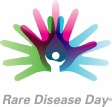
www.thetinman.org Copyright © All rights reserved.
Disclaimer: The material presented in this site is intended for public educational purposes only. The author is not offering medical or legal advice. Accuracy of information is attempted but not guaranteed. Before undertaking any diet, or health improvement program, you should consult your physician. The author is in no way liable or responsible for any bodily harm, physical, mental or emotional state of any patient reacting to any of the content on this site. Thetinman.org has not examined, reviewed or tested any product or service mentioned herein. We are not being paid to advertise or promote any product or service mentioned herein. The links are offered strictly as examples of resources available. The site assumes no responsibility or liability of any kind related to the content of external sites or the usage of any product or service referenced. Links to external sites were live at the time of creation of the link. Thetinman.org does not create content for or manage external sites. The information can be changed or removed by the external site’s administrators at any time and they are responsible for the veracity of their information. Links are provided to support our data and supply additional resources. Please report broken links to administrator@thetinman.org. Thetinman.org is not a charitable foundation. It neither accepts nor distributes donations or funds of any kind.
GUIDE TO STIFF-PERSON SYNDROME


Awareness and advocacy efforts can help.
Campaigns such as those for fibromyalgia have increased awareness, resulted in ads and commercials, and - more importantly - have attracted research funding through grass-roots advocacy.
Educating physicians, medical professionals, and the public can lead to progress for stiff-person syndrome.
There has been a recent spate of news articles about the disease in addition to a new push for stem-cell therapy studies due the success of such treatments for multiple sclerosis and other autoimmune diseases.
The disease has been assigned a rare disease ribbon. The zebra-stripe represents rare diseases. The metallic silver with black stripes is specific to stiff-person syndrome.
The NIH has an ad-hoc committee that meets three times a year to review grant applications for specific medical conditions. Because stiff-person syndrome is poorly understood, and affects only 7,000 people, grant applications for research would likely not meet with approval.
However, stiff-person syndrome is an autoimmune disease that has close ties with type 1 diabetes and autoimmune thyroid disease. It shares features with many other neuromuscular diseases such as spasms, ataxia, stiffness, rigidity, dystonic postures, and startle. It is possible that by closely investigating stiff-person syndrome, they could discover connections which could lead to treatments for multiple medical conditions.
Currently, the best hope for stiff-person syndrome at this point is that it benefits from research into related conditions.
Patients, their loved ones, and supporters can help by writing to the NIH and to Congress to encourage funding for additional research and access to stem-cell studies.
WHO TO WRITE
Write to your local or state officials. Letters should be addressed, “The Honorable name, title (U.S. Senator, House Representative, Governor, etc.).”
Locate your Senator or Representative online, or use the following two generic addresses:
The Honorable (name of Representative)
U.S. House of Representatives, Washington, DC 2051
The Honorable (name of Senator)
U.S. Senate, Washington, DC 20510
http://www.senate.gov has complete listing of senators from every U.S. state, including address information. This site is regularly updated to reflect the most recent elections.
http://www.house.gov has complete listing of representatives to the House from every U.S. state, including address information. This site is regularly updated to reflect the most recent elections.
http://www.nga.org has a complete listing of every U.S. governor, including contact information. This site is regularly updated to reflect the most recent elections.
http://www.whitehouse.gov gives information about how to contact the United States president.
http://www.canada.gc.ca contains links to every Canadian province in addition to contact information for national departments and agencies.
http://www.nih.gov provides an overview of each division of the National Institutes of Health. Here’s how to contact the NIH:
Email: NIHinfo@od.nih.gov, Contáctenos en Español
Phone: (301) 496-4000,
TTY 301-402-9612
Toll-free Health Hotlines
Mail: National Institutes of Health, 9000 Rockville Pike,
Bethesda, Maryland 20892
Director, National Institutes of Health
Building 1, Shannon Bldg RM 126
1 Center Drive, MSC 0148
Bethesda, MD 20892-0148
Director, NIAMS
NIH Bldg 31, Room 4C32
31 Center Drive MSC 2350
Bethesda, MD 20892-2350
WHAT TO SAY
Keep this one page if possible:
1. Introduce yourself as a person with stiff-person syndrome (or a loved-one, friend, concerned individual).
If you wish, you can indicate your age, sex, marital status, number of children you have (if any) and whatever else you feel may be pertinent to depicting you in your situation. You don’t need to go on at length about “what” stiff-person syndrome is, print out the Stiff-Person Syndrome Fact Sheet (in PDF format) and attach it to your letter.
2. Describe how stiff-person syndrome has negatively impacted your life. Here are some points you may want to address. This section should be brief—one to two paragraphs long.
w How many years you have had the syndrome, including the time you suffered without the benefit of a diagnosis.
w How much money and how many doctors it took you to get a diagnosis.
w The difficulties you have had with finding a knowledgeable and compassionate physician to treat you (dollars wasted, number of wrong diagnoses or inappropriate surgeries/treatments, and mention one of the most insulting comments or humiliating situations you had to endure during this troublesome time).
w The number of various treatments you have tried and how ineffective they have been.
w Any problems you have had with your insurance company not paying for your stiff-person syndrome treatments.
w Has stiff-person syndrome affected your employment status? Do you consider yourself to be disabled by it (fully or partially)? And if so, are you receiving social security disability benefits or other forms of government compensation? Have you applied for financial assistance but been turned down?
w The impact that stiff-person syndrome has had on your family life: Has it cost you a marriage? Does it impair your ability to function as a parent?
w Have you dropped out of sight “socially” due to your condition? Social isolation is a nasty enemy to people who suffer daily from chronic illnesses.
w Mention if there are other members in your family, especially children, who are struggling with the symptoms of stiff-person syndrome.
3. Express your thanks. Always be polite and thank your official for taking the time to read your letter. Let him or her know that any help that they can offer would be greatly appreciated. You can also state that you would be eager to hear about any suggestions that they could provide you.
4. Sign off. Use “Sincerely,” “Kindest regards,” or “Yours truly,” then sign your name. You may send out a neat photocopy of the body of your letter (if you don’t have access to a word processor and printer), but personally sign each copy that you send out. Always include your mailing address. Government officials are obliged to respond to your inquiry as long as you provide your address.
5. Make copies of everything. Make a copy of your letter for your own files. If you receive a response from your elected official, share that information with other stiff-person patients in your support group or online with other SPS groups. The more letters sent, the more attention they will garner.
Please feel free to make multiple copies of the Stiff-Person Syndrome Fact Sheet. No reprint permission is required for the use of this document.
WRITE IN